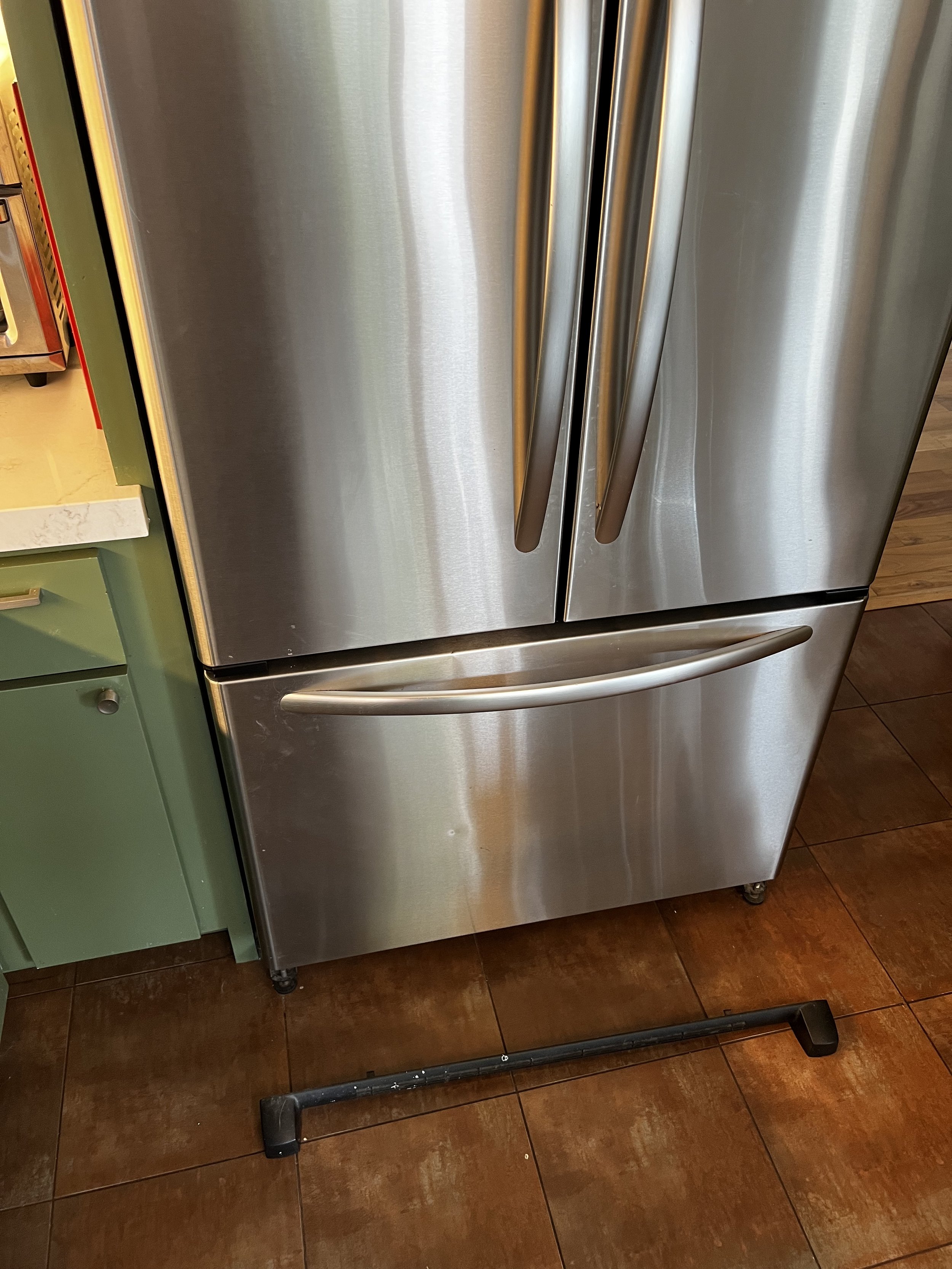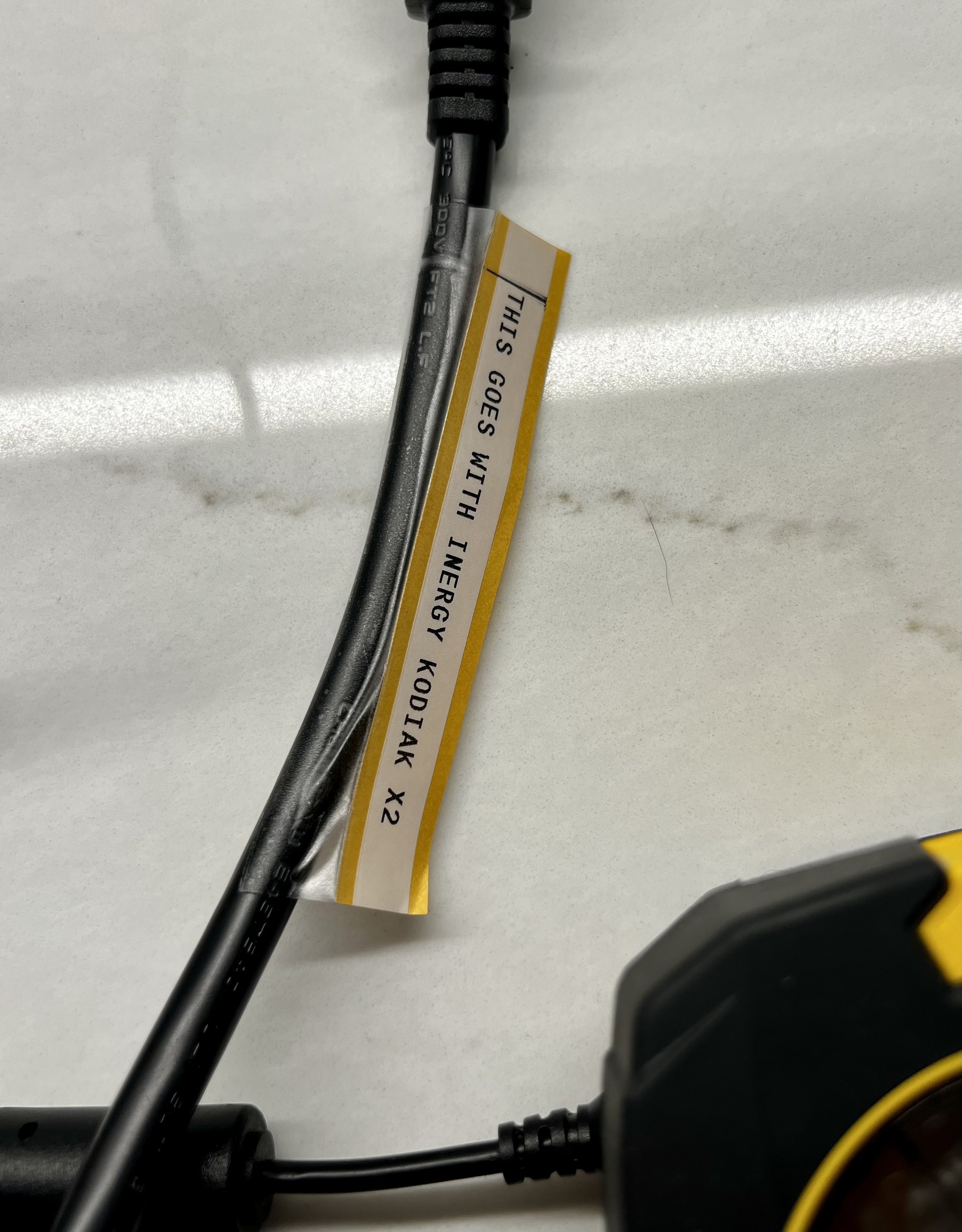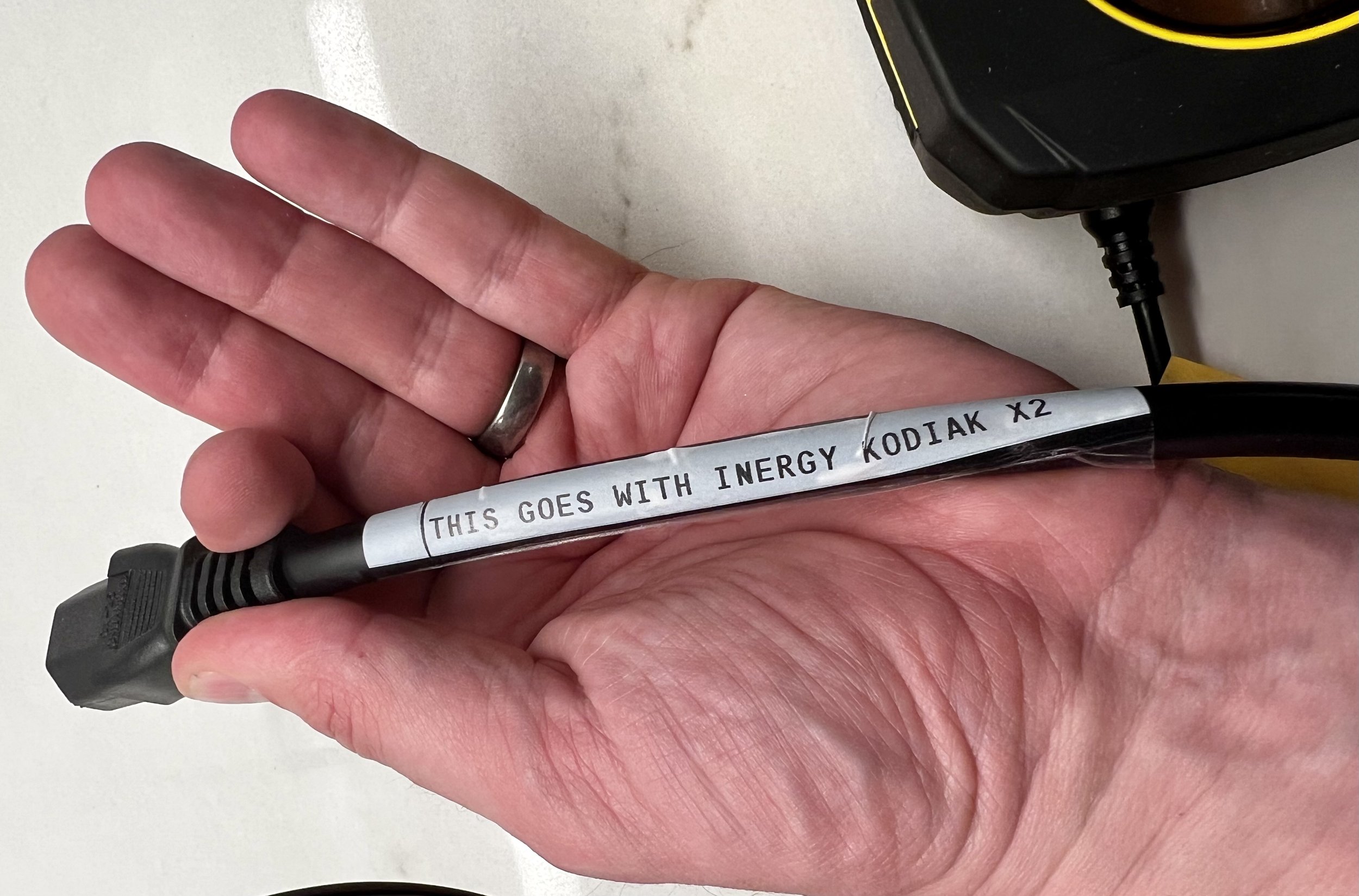Keep Your Fridge running when the power goes out
Here in California, we have a horrible thing called PG&E (Pacific Gas & Electric). They are a terrible, greedy, politically connected company that has literally blown up whole neighborhoods and burned down large portions of our state. So my assessment about them being a terrible company is not some sort of opinion. It is an established fact that decades of greed and grift, and a corrupt CPUC (the people who are supposed to regulate PG&E, but in reality all go on to work for them later) have caused California to have a fairly terrible energy grid. Maybe not as bad as Texas, but California’s energy grid has been manipulated and neglected for a long time. If you want an example, go watch the fascinating documentary on Enron, called “The Smartest Guys in the Room”. This explains how greedy traders intentionally caused blackouts to make money. There’s also a book (I didn’t read the book, I watched the movie), but information on this is not hard to find.
Anyway, all of this is to say that even in affluent places like California, we lose power WAY more than you might think. I grew up in rural Maine, and losing power was sort of part of life But you don’t think that living some place like Northern California would have you risk losing power for days at a time. Yet… it happens ALL the time. Winter? The winds. Summer? Too hot and everyone uses too much power on Air Conditioning. Fall? That’s wildfire season. Gotta shut off the power so they don’t burn even more stuff down because 40 years of untrimmed, unmaintained tree growth smashes down all the power lines and start fires. So we risk losing power kind of frequently.
When you lose power, the main thing (assuming you do not have critical medical device like a CPAP or something. If you do, you really need to get serious about a power backup) that is obnoxious and inconvenient is that you lose your refrigerator. Yes, you can milk it a little if you don’t open the door, but most of us have a lot of money in food sitting in the fridge at any given time. Frozen meat, ice cream, those berries you were going to make a pie out of, the milk you want to use for your cereal. All of that goes bad fairly quickly.
So it makes a lot of sense to focus on a way to at least keep your fridge running. Now, there are several ways to go here.
You could invest big money and get a full house battery backup. If you did this, you don’t have to worry. Solar, battery backups, etc. If you have all that, you are good. Stop reading now. You rule!
You could do the trick where you freeze a bunch of water bottles in your freezer and that will extend the amount of time before your frozen food perish.
You could run a generator. And yes, this is a great option, either as a small, Honda EU2200i sort of thing, or as a whole house generator. But generators are loud, draw attention, and require gasoline. Which is a whole different topic (gasoline storage, that is).
You could run a battery backup for just the fridge!
This last one is what I’ll focus on here, because I recently did this exact project. Yes, I have a generator, but it requires setup, running a cord in to the house, and I am always worried about Carbon Monoxide seeming in to the house through some crack I don’t see. And if the power goes out and I am not home, I would prefer to have the fridge just keep working till I can get home. I also prefer to have something I can “set and forget” so my wife and kids don’t have to deal with it.
Before setting up a backup, we need to figure out how much power we will need, and do a little math.
How much power does a refrigerator actually use?
The power needed will vary depending on the size of fridge, the weather, what you have in it, and even the country (some countries run on 240v, of course but here in the United States we run on 120v Single Phase 60Hz). However, the general way to figure out how much power anything uses is to figure out the wattage, and then figure out how often it runs.
You can use the following equation to calculate Watts:
Power (in Watts) = Voltage X Amperes (Current)
So let’s say, for example, you have a 100 Watt Light bulb (not that anyone uses incandescent bulbs any more, but this is an easy example). You know the voltage (120V in the case of the United States), so you can figure out that that lightbulb is “drawing” .833 Amps.
100W / 120V = .8333A
There are tons of website that will walk you through all the examples of how to do the math, but I am going to make the assumption that you know 1.) how to do math 2.) that a kW means “kilo-watt” which means 1000 Watts.
So, let’s look at a real example. Let’s use my actual refrigerator. You can go look at yours too. C’mon. It’ll be fun! There will be a sticker somewhere, or a label (mine happens to be inside the door) that will look something like this.
The sticker from my fridge. Notice 115 VAC and 7.90 AMPS
Notice a couple things. Firstly, this fridge is rated for 7.9 Amps. They tell you that, so you know what size cord to use, and what outlet you have to plug it in to. It also says 120V AC and 60Hz. Which is good, because that means my fridge will work in the United States. That 5.00 oz R134a part just tells you how much refrigerant (134a is a refrigerant) the compressor in the fridge has. Ignore that. So, doing the math, this means that my fridge is a 948 Watt fridge.
(120 V) x (7.9 Amps) = 948 Watts
Which is .948 kW (kilowatts). Now, if we stopped there, and tried to figure out how much “juice” we need to run the fridge, we would e wrong for a few reasons. First, the fridge does NOT run all the time. If you listen, your fridge only runs some of the time. It cools things down, then stops, and lets things warm up slightly, and then runs again. Another thing is that because of the fact that compressors take more energy to start up than they do to keep going, the power draw isn’t actually smooth/even. Factor in the part where older fridges aren’t as efficient as they age (dirty coils, etc) as well as the part where these ratings do not take in to account how cold you have your fridge set and how often you open the door, and we are guessing.
I always wondered about how often my fridge ran, and how it worked, and I wondered if there was a way to get an alarm if the temperature got too high (like a child leaving the door open). So I keep two of these SensorPush sensors in it. One in the freezer, and one in the fridge. They measure temperature over time, and humidity. And you can go and look at temps over time. They run on batteries (A CR2477, which is kind of a weird size. See my Topic on Batteries). You can see the left sensor is in my fridge, and the other two pictures show the difference between an HT1 and an HTP.xw (they sell different types)
Graph of my fridge temperature from about 4AM to 7AM on Feb 26th.
There is an app on your phone, and you can chart temp over time. So to get an idea of how often my fridge runs (not when we are opening it all the time, but over night), I can look and see a chart like this (screenshot from my phone).
You can see that every time the graph for temperature is going down, it must be cooling, and as it is going up, it must be idle just sitting there. So it looks (looking at the graph) like the compressor kicks on at 38.6 F and lowers it about a degree F and then lets it rise. And it appears that it runs maybe 45% of the time? Maybe a little less.
Sidebar: Those little SensorPush sensors are awesome. They come in three versions (click the links to see the price for each):
HT1 (the basic one. A little less accurate, not water resistant, and only does Temp and Humidity)
HT.w (next level up, adds more water resistance, and holds a lot more data - 45 days. Also made in USA as opposed to China)
HTP.xw (top of the line. Can also do Barometric pressure).
I used them in the fridge, freezer, and also in places like the garage and attic to check the temperature without having to go there. You can get alerts on your phone when the temperature (or humidity) falls outside a particular range.
The other cool thing about them is that I could actually watch to see how fast my freezer and fridge heated up when the power went out. Spoiler alert… way faster than I wanted. Hence, this project. Last small note, if you are gonna get one of those SensorPush things, consider the Gateway. The Gateway is a wifi router of sorts that talks to SensorPush sensors and sends their information to the internet so you can get it anywhere on your phone. You can read the sensors straight to your phone without the gateway, but you have to be in range of it. It does add some expense, but makes it way more convenient.
OK, so back to estimating.
One foolproof way to estimate (or rather track) energy usage is to plug the fridge in to a “Kill-A-Watt”, which is a handy little tool that measures current and voltage and figures out how much energy an appliance has used over time.
There are a few versions, but the one I have allows you to set the cost per kWh, and look at voltage, total amount of energy used, and cost (it uses the number/cost per kWh you enter in using the menu). So I could plug the fridge in, wait a day, and read the Kill A Watt!
EnergyStar “EnergyGuide” example
Perhaps the easiest (meaning less work to do, and you don’t need to buy stuff) is to go look at the energystar rating for your fridge if you know it. In the US, you can usually go look this up at www.energystar.gov. They tell you that a given appliance uses X kwH per year. So you can just divide that by 365, and get the rough amount of electricity you use per day. I have an older fridge, so I don’t have the energystar sheet like the one here, but I looked it up on the website and mine looks like it would be about 336 kWh per year. Which winds up being .92 kWh per day. Which is actually pretty close to the .984 kWh I calculated above.
So let’s take that as the example. I now need to come up with ONE kWh per day!
Note that because it isn’t actually gonna run all the time, it is less than that, but let’s say 1 kWh for fun.
How can I run my fridge seamlessly with power out?
One of the bad things about power outages is that you have no real idea when the power will come back. So let’s say you lose power. You freak out, pull the fridge out from the wall, and run an extension cord out to your generator. You fill it up with gas, everything good, and fridge is happy. Then…. power comes back on! You put everything away and… click. Power out again.
I was looking for a solution that would be automatic. Meaning it would automatically charge itself and maintain itself during normal life, but kick in (and off again) without the need for human involvement when the power comes back on.
As a person who tries to be prepared, I have long owned products from Inergy. They make Solar Generators. Now, there are lots of brands of Solar Generators. Jackery, Goal Zero, and many others. I have never bought anything from Jackery, and I own a few Goal Zero products (but not their generator) and I also own a couple things from EcoFlow. But by far my favorite Solar Generator is the Inergy. Now, you are very welcome to go down rabbit holes on the internet on reviews of different Solar Generators. There are many such things on Youtube, and I have watched many of them. But I can’t really speak for products I don’t own. And I have owned and used a bunch of Inergy products.
I owned a Kodiak, and then an Apex. Their newest one is called a Flex. I don’t own a Flex yet, but I do own the extension batteries. I’ll probably write more about those later, and I have very much run my fridge on those in a power outage. HOWEVER, the Apex, Kodiak and Flex are NOT UPS (Uninterruptible Power Sources). I found this out the hard way last power outage. I thought I would be all smart, and plug my solar generator in to the wall, then plug the fridge in to that, and assumed that when the power came back on while I was at work, life would be good. It didn’t work. Because it wasn’t built as a UPS.
Recently (I was one of the people who signed up super early to get a big discount, and I waited for it to arrive for a long time) Inergy released the Kodiak X2.
This is a Solar Generator which is designed for exactly this purpose. To be used as a UPS backup. You can read the specs on the website, but here you go (my comments in RED):
Battery: 1280Wh LiFePO4 (LFP) <— This is good. LiFePO4 batteries last WAAAAAY longer. And this means it has 1.280 kWh worth of juice in it. Which is MORE than enough for a full 24 hours of fridge running. In fact, that is probably close to a day and a half, assuming I don’t recharge it with a generator or some solar panels during the day, when I am around.
AC Output: 120VAC 60Hz 1200W continuous, pure sine wave <- Means you can run sensitive stuff like computers, and can run something with 1200W (1.2KW) constantly.
Dualink Technology: Link two X2's for 120VAC @ 2400W pure sine wave continuous AC output & 2560 watt-hours of battery capacity <- Means you can hook two together
UPS Function: switching time ≤ 10ms <- This is the big deal. This means it will automatically kick in when you need it.
AC Charging: 1000W max continuous AC charge rate
MPPT Charge Controller: 10-65VDC, 12A. Max charge rate 450W (requires >40VDC input)
Dimensions: 15 x 10.25 x 8.75in
Weight: 35lbs <- Not light, but not heavy either. Lighter than a car battery, and has a nice handle.
Cycle Life:Up to 6000 (80% DOD) <- This means you can charge it 6000 times. That means if you charge it and discharge it once a day, it will last 16 years. This is WAY better than a lot of others. Don’t compare this to anything that doesn’t have a LiFePO4 battery.
Operating temperature: 14-104°F
OK, so this thing is cool. Now, if you were running some sort of sweet off-grid setup, or using this at a cabin, or in an ice fishing shack or something, you could hook up some Solar panels to charge it up during the day, and discharge at night. I have my Inergy Apex in my camping truck, with a 200W panel on the roof of the truck, that constantly charges it while we drive around, and it runs our 12V fridge in the truck with no issue at all, and runs the fridge all night easily.
So it seems like this is the perfect thing for this application. Let’s give it a try, shall we? (Spoiler, I already did, and it works great). Also, this isn’t an ad, but if you want to buy something fro Inergy, click the button below, and you get my 10% discount code. Inergy gave me a discount code because I bought a ton of stuff over the years, and have been a part of a bunch of their programs, and I asked if I could post it here, and they said yes. So the link below should give you a free 10% off (that discount applies to larger purchases, so I don’t think it works for small stuff on their site, but it totally works on the Kodiak X2 itself, which was the point here). Free discounts never hurt!
Let’s Install it!
The first thing I did was test the whole thing. I slid the fridge out, and plugged it all in to try it and it worked well. If you have never pulled your fridge out, you first have to remove the little plastic cover from the bottom (that black thing in the picture), then you find the little screw legs and retract them, and then it should roll straight “out” of the wall. All fridges have wheels under them, and you use those little screw things to lift the fridge up off the wheels when it is “parked”. So thread those in a way that “retracts” the feet, so the wheels touch the ground. That last picture shows the plug behind my fridge. Notice also mine has a water hookup for the ice machine. You can ignore that for this project. Just don’t crush any lines.
For me, I decided to store my Inergy Kodiak X2 in the cabinet above the fridge. So I needed to drill a hole through the cabinet, and get two extension cords: One for to go from the fridge up to the cabinet, and one to help the charging cable for the Kodiak X2 reach the outlet. I went to Home Depot and got myself a 2” drill bit, and some painter’s tape (to keep the drill from tearing up the paint in the cabinet) and a Furniture Hole Cover (to make the hole look nice, and not let the extension cords rub on the hole edge.
Note that you need to get heavier duty extension cords here. Notice I got 14 Gauge, which are rated to 15 Amps (which is good, because as you recall, the fridge is 7.9 Amps).
Not the biggest project I have ever done by a long shot, but it did (for me) require drilling a hole in my nicely painted cabinets. With that all set, I decided that because I was going to leave theKodiak X2 in the cabinet all the time, I had better add some labels to remind myself what everything did. Not just for me, but for my wife or whoever else happens to be home in an emergency. I used both my regular label maker and by cable label maker (See my Topic on how much I Love Label Makers) and you can see the results here.
I couldn’t help myself. I had to add a bunch of labels.
And once I had that, I plugged it all in, and you can see it running and all plugged in. You can also see that it has a nice LED light you can turn on two brightnesses, and see that the Fridge, when running, is drawing 120W, and the battery is at 100% charge.
So that is that! I also added an extension cord coiled on top of the Kodiak X2 up in the cabinet, so if the power goes out, it is easy to run power down to the kitchen, to charge cell phones, or whatever, without having to go out to the garage. I also noticed there’s a very small fan that runs to cool the system, so I made sure to leave space around the Kodiak X2 up in the cabinet.
It has been running this way for a long time, now, and thought I haven’t fully tested it in a power outage, when I throw the breaker in the fuse box to turn the power off, it works perfectly!
What if I want to buy one of these things?
Well, this isn’t really a sales blog, and I cannot sell you a Kodiak, or any other Inergy product. HOWEVER, as a part of writing this, I reached out to Inergy (who have a really nice set of people, who are based in Mountain Time in the US and actually answer the phone, which is nice when I have questions!) and they said that they’d give me a 10% off coupon because I had been a good customer over the years. As I mentioned above, I was part of several of their “commit early” programs for new products, and I have bought a lot of stuff from them. So if you are interested in an Inergy Product, and you want 10% off, try the link below:
The good news is that 10% should work for ALL their products, not just the Kodiak X2. Their Inergy Flex is awesome as well, and they just made a cool Green one (I don’t have that, but it looks nice in the pictures). I’ll say, however, that for the fridge backup, the Inergy Kodiak X2 is the way to go, because of the UPS capability.























